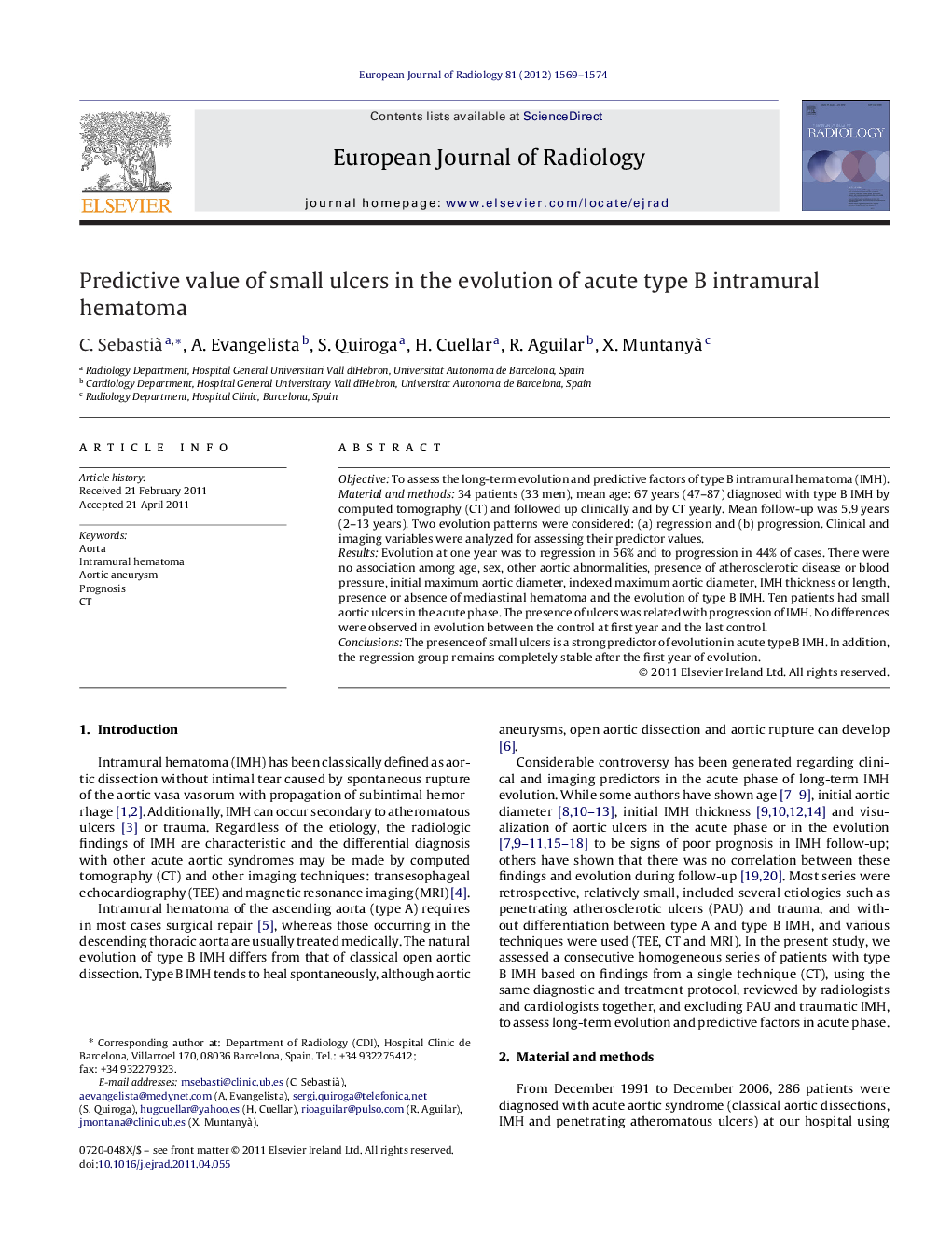| Article ID | Journal | Published Year | Pages | File Type |
|---|---|---|---|---|
| 4225774 | European Journal of Radiology | 2012 | 6 Pages |
ObjectiveTo assess the long-term evolution and predictive factors of type B intramural hematoma (IMH).Material and methods34 patients (33 men), mean age: 67 years (47–87) diagnosed with type B IMH by computed tomography (CT) and followed up clinically and by CT yearly. Mean follow-up was 5.9 years (2–13 years). Two evolution patterns were considered: (a) regression and (b) progression. Clinical and imaging variables were analyzed for assessing their predictor values.ResultsEvolution at one year was to regression in 56% and to progression in 44% of cases. There were no association among age, sex, other aortic abnormalities, presence of atherosclerotic disease or blood pressure, initial maximum aortic diameter, indexed maximum aortic diameter, IMH thickness or length, presence or absence of mediastinal hematoma and the evolution of type B IMH. Ten patients had small aortic ulcers in the acute phase. The presence of ulcers was related with progression of IMH. No differences were observed in evolution between the control at first year and the last control.ConclusionsThe presence of small ulcers is a strong predictor of evolution in acute type B IMH. In addition, the regression group remains completely stable after the first year of evolution.
